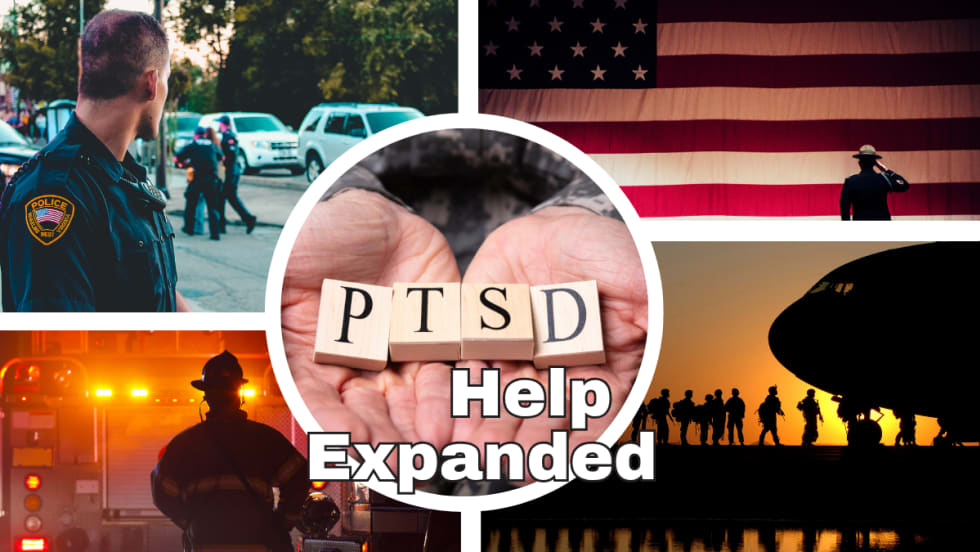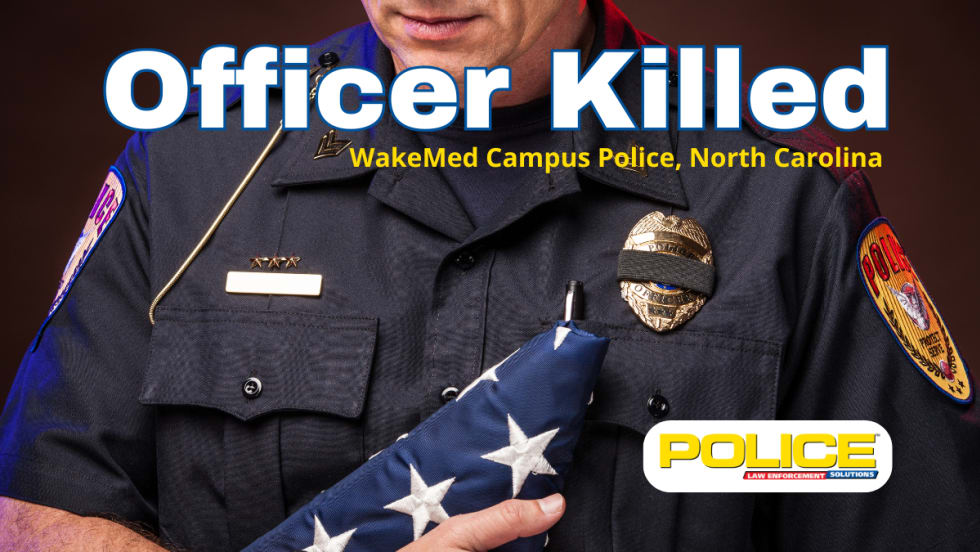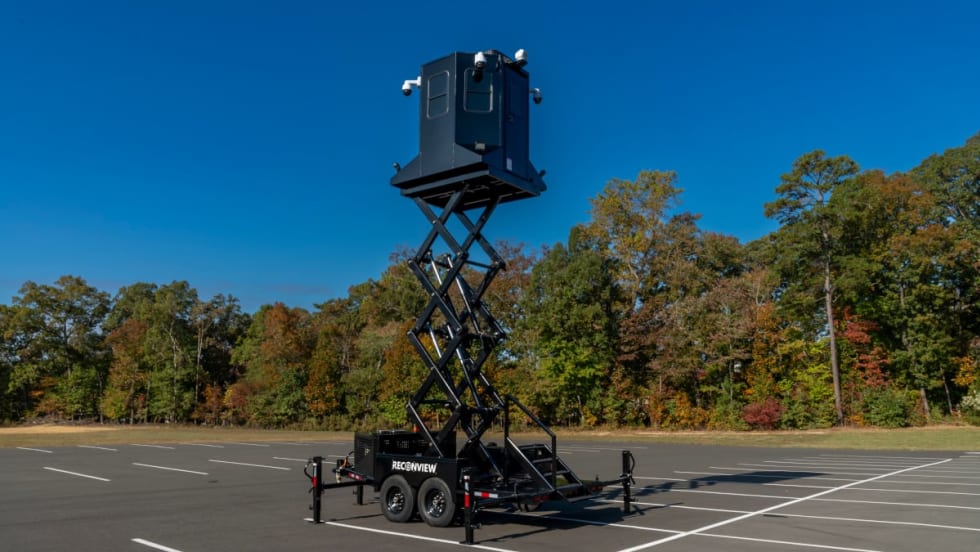Cops Provided a Way to Learn Proper Wildfire Response
The Ready, Set, Go! materials point out the critical role law enforcement plays when an evacuation from a wildfire is needed. Information is provided both in a detailed, yet concise, video as well as a flyer, which IAFC suggests can be kept in patrol cars.
Patrol officers never know where the next dispatch will lead, but in the case of being an early responder to a wildfire cops need to be prepared. The International Association of Fire Chief’s (IAFC) is working to better educate police officers on just how to approach responding to wildfires.
The IAFC Ready, Set Go! Program (RSG) has partnered with the National Sheriffs’ Association (NSA) and the International Association of Chiefs of Police (IACP) to enhance law enforcement officers’ safety and understanding of their critical role during wildland fire events.
The Ready, Set, Go! materials point out the critical role law enforcement plays when an evacuation from a wildfire is needed. Information is provided both in a detailed, yet concise, video as well as a flyer , which IAFC suggests can be kept in patrol cars. In the video, officers share critical considerations their peers need to know.
The instructional video stresses implementation of LCES during any wildfire response. The acronym stands for lookouts, communications, escape routes, and safety zones.
Tips associated with LCES are:
Lookout — Each responder has a share of the lookout responsibilities and should speak up when they see a situation that deems a “watch out,” which is a change in the situation that is going to impact operations and life safety.
Communications — Team members need to know which frequencies they are operating on and strive to communicate as much as possible, providing situational updates whenever necessary.
Escape Routes — Identify escape routes on arrival. If you do not already know your escape routes, get an update from incident command, and identify these locations on a map.
Safety Zones — Identify your safety zones since those will be used if your escape routes are compromised. Safety zones are areas where people can get out of harm's way without having to use a shelter.
When an officer first arrives in the area of a wildfire, he or she should always remember to take certain actions initially. Step one is to notify dispatch, thereby making sure the incident has been reported.
“Then look at your surroundings to ensure your safety. You may need to consider alerting the public, facilitating rescues, ordering additional resources, guiding evacuees out of the hazard area, directing traffic, and protecting the scene. Check in with your dispatch or supervisor to provide situational awareness updates and to receive further direction,” the training video instructs.
Many of the points highlighted in the video are clearly spelled out on the flier the IAFC hopes officers will keep and use. It simply breaks Ready, Set, Go! principals down into simple considerations.
Learn More: Disaster Preparation & Response Guide
Ready
The Ready portion of RSG lets officers know what they should understand about wildfires.
Understand basic fire behavior, including concerns of radiant heat when homes are close together, the tendency for convected heat to travel up a hillside, and the threat of flying embers than may cause spot fires. Be sure to watch out for spot fires that ignite along evacuation routes.
Consider any possible arson investigation and know the significance of crime scene preservation and witness interviews.
Understand how law enforcement fits into the Incident Command System (ICS). The first-arriving officer, whether police or fire, is the initial incident commander until relieved by a more qualified person. Then, work according to the plan created by the unified incident command and understand local evacuation terminology and procedures.
Set
The Set portion of RSG focuses on providing officers a better understanding of situational awareness when confronting a wildfire and evacuation. Tips include:
Be aware of pending weather situations, in particular warm and dry conditions with low humidity and higher winds.
Basic PPE should be at hand. That includes making sure your vehicle is fueled, having a bandana and goggles, and staying hydrated, plus other considerations that provide for your safety.
Understand what to do if you are first on scene. First report the fire, and then ensure your life safety and the safety of the public. Protect the area where the fire began and use your body-worn camera (BWC) to document the scene.
Ensure communications and an overwatch while remembering that you may not be able to rely on communications such as sell towers if they lose power. The best option is your mobile radio, but make sure you know what frequencies are in use regarding the fire response.
Know your area by driving and becoming familiar with the road conditions. Be aware of dead-end roads and make sure you look out for your primary and secondary escape routes before they are needed. Also make note of any citizens in the area that may have special needs in the event of an evacuation.
Provide the public with updates and keep citizens apprised on evacuation zones and care facilities.
Go
The Go element of RSG provides officers with instructions on how to facilitate evacuation of the public. The RSG for Law Enforcement materials break these suggestions into three components:
Evacuation – As the fire is contained the public will want to return to their homes, but make sure there is a re-entry plan developed before allowing the public to return.
Get out now, meaning officers need to know the difference between an evacuation order where you assist residents and an order where you abandon evacuation efforts.
What to do if caught in the fire. Flying embers can cause a fire ahead of you, leaving you trapped. Smoke can also pose visibility challenges and affect breathing. First, communicate your situation and location if you cannot escape and then consider sheltering in place until the fire front passes. Your patrol vehicle or a non-flammable structure may be a safe refuge. If trapped inside your vehicle, keep it running with the air conditioning operating in the recirculate mode. If you do not keep the vehicle running, it may not restart when needed.
Learn More: When Disaster Strikes: Equipping Your Fleet for Survival and Recovery
More Patrol

Dashcam Video Shows Officers Rescue Man from Burning Car
Dashcam video released by a New Jersey police department shows two of its officers rescuing an unconscious man from a burning car after a crash.
Read More →
Aimpoint COA optic + A-CUT Named Red Dot of the Year
The Aimpoint COA optic + A-CUT system has been named Red Dot of the Year by Guns & Ammo magazine. The new optic system was introduced in January 2025.
Read More →
From the Show Floor: Axon
Join POLICE as we visit with Abi Stock, of Axon, to learn about the company’s latest technology offerings, such as Axon Assistant, Form One, and the DFR integration with Skydio.
Read More →
Back Face Deformation, Brain Injury and Ballistic Helmets – Why the “Dent Doesn’t Matter” Claim Ignores Science
Alex Poythress, co-founder and CEO of Ballistic Armor Co., explains why ballistic helmet buyers should insist on full test data, including BFD measurements, standoff distance, and padding configuration, rather than rely solely on penetration ratings.
Read More →
Streamlight Marks 15 Years of Support for Breast Cancer Research Foundation With $20k Donation
In its 15th year of supporting the Breast Cancer Research Foundation, Streamlight donated $20,000 to help in the fight against cancer. Donations were generated through the sale of special Wedge XT models and other pink flashlights.
Read More →
Police-Led Mental Health Charity Expands to Include Veterans
Talk To Me Post Tour (TTMPT), a non-profit organization that has been providing peer-support programs and professional psychological support for first responders, is now expanding services to military veterans.
Read More →
WakeMed Campus Police Officer Killed in Hospital Shooting
A WakeMed Campus Police Officer died after being shot in the lobby of the emergency department at a North Carolina hospital over the weekend.
Read More →
Video Shows Barricaded Suspect Fall Through Ceiling and Into SWAT Custody
Deputies in Indian River County, Florida, apprehended a suspect after he fell through the ceiling with SWAT members waiting below. The sheriff’s department released video of the apprehension.
Read More →
From the Show Floor: T2 Systems
Learn about T2 Systems and its electronic parking enforcement solutions. Retired Chief John Holland outlines the benefits of using such a system to manage parking enforcement.
Read More →
Texas Police Department Adds Reconview Tower
A Texas police chief shares how the Decatur Police Department will use its new Reconview observation tower.
Read More →

